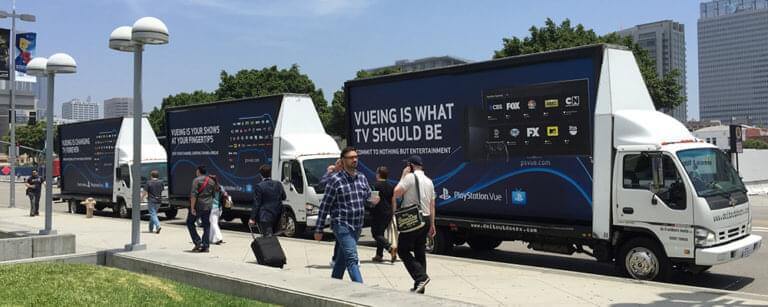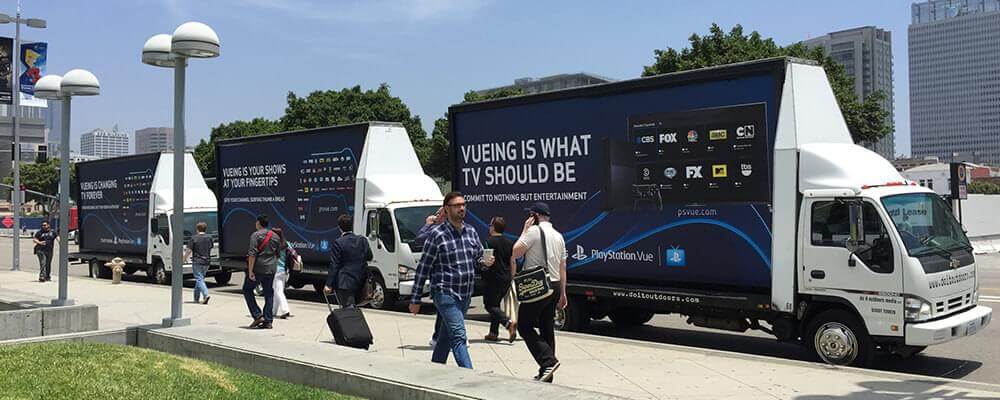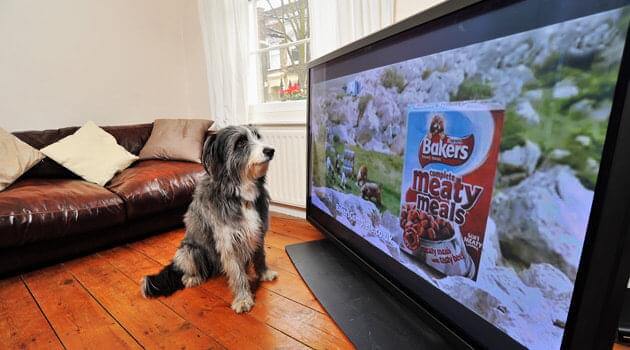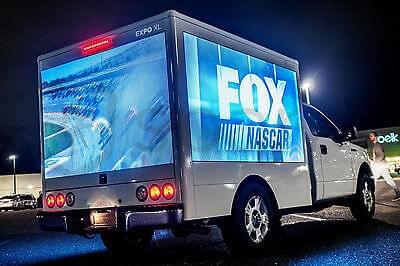
Today’s advertisers have an array of choices at their disposal. From television, to radio, to social media, to outdoor advertising, the opportunities for reach and awareness are higher than ever.
The internet, alone, makes way for a ton of advertising with the advent of branded viral videos, banners, advertorials, influencers, sponsored websites, branded chat rooms and so much more. But, transcending internet advertising, there are effective ways to target to an audience in an outdoor setting.
Television and billboards are the oldest forms of an advertising strategy before the dawning of the internet. But, how do they remain relevant sources of advertising? And who are they speaking to nowadays?
Mobile billboards reinforce television messages when viewers are away from their homes, and running daily activities. Television advertising attracts consumers when they’re in their home, quietly removed from out-of-home interferences.
Let’s highlight the advantages and disadvantages of television, cable, and truckside advertising to better see how a company should advertise apart from the Internet.
Today, many consumers view a limited amount of TV while digital video recorders (DVRs) have shifted habits toward ad avoidance. Light television viewers comprise 40 percent of the total television audience, spending less than 90 minutes per day watching TV between the hours of 6:00 AM and midnight. It’s not often that media consumers will watch a scheduled program on television unless it’s a late night talk show or live screening event.
Big market stations remain critical to broadcast networks, despite an increasing reliance on digital and online content distribution. For dozens of major independent station group owners, local television is their core business and revenue source. With broadcast networks selling programs directly to cable and new digital media outlets, and as broadcast networks rely more on online sites, local stations have faced a dilution of the affiliate brand.
The high capital cost, declining revenues, and tighter margins have become increasingly apparent among television stations. Local TV station owners are under pressure to modify high-cost legacy structures, leverage their unique local content and connections, and engage in new digital enterprises to collectively offset traditional ad declines.
However, there are some benefits to television advertising.
Television Benefits
- Wide geographic coverage
- Broad audience reach
- Perceived accountability with well-accepted audience measurement metrics
- Relative ease of buying and post-buy maintenance
- Proven success record for promoting mass consumer products
And, some disadvantages.
Television Disadvantages
- Audience share is generally declining due to fragmented audiences
- Increasing use of DVRs diminishes the impact of commercials
- Many television shows skew older and lower income consumers
- Typically high CPM costs and rising production costs
- Primetime is no longer the preeminent reach builder with a large part of the viewing population not substantially reached by the primetime networks
- Increasing ad clutter as commercial pods lengthen
As you can see, the disadvantages of television advertising are gaining superiority nowadays.
Cable Television
In 1980, cable viewing was minimal compared to network television viewing. Today, cable offers considerably more targeting capabilities than broadcast television, allowing advertisers to reach specific consumer groups according to their programming interests and preferences. The average cable home has access to 120 channels with nearly 3,000 programs available each week.
The cable industry faces new challenges. The growth in available channels and programming has led to unprecedented broadcast audience fragmentation, making it increasingly difficult for brands to effectively reach sizeable audiences without excessive ad spending. Direct-broadcast satellite (DBS) technology has captured millions of subscribers, significantly reducing the reach of cable advertisers. Moreover, digital broadcasting television has furthered audience fragmentation among cable operators.
Cable Television Benefits
- Penetration of 90 percent of U.S. households
- Typically lower CPM costs compared to broadcast television with similar benefits
- Greater targeting capabilities compared to broadcast tv
- Programming available in all periods
- Original cable television programming comprises 67 percent of all content
Cable Television Disadvantages
- Smaller audiences than broadcast television
- Excessive fragmentation producing relatively small audiences for many channels
- Higher number of commercials per hour compared to broadcast television
- With so many channels available, audiences can easily click away from interrupted ad programming and find something new elsewhere
Truck-side Advertising
Mobile billboard advertising or truck-side advertising is the marketing practice of wholly or partially covering a transport truck into an advertisement, thus turning it into a mobile billboard. This can be achieved by painting the truck surface with given artwork and copy from a brand, product or service, but it’s becoming more common today to use large vinyl sheets as decals. These can be removed easily, making it much less expensive to change from one advertisement to another. Vehicles with large, flat surfaces, such as trucks, are relatively easy to work with. However, smaller automobiles are more work because of their curved surfaces.
Let’s see the pros and cons of this industry.
Advantages of Truck-side Advertising
– You automatically see it when you’re exposed to it on the road; the CPI is far less than that of television advertising
Disadvantages of Truck Advertising
– When the truck is parked or at a standstill, it won’t have the effect of targeting potential consumers on-the-go
– If there are changes in the product logo or image, it costs to replace it
– If the driver of the truck gets into an accident, then the reputation of the advertised brand may be tarnished
As you have heard, television, cable, and truck-side advertising each comes with their share of pros and cons however, in a booming and significantly uprising outdoor advertising genre, mobile billboards deliver messages with the best reach without interrupting a consumer’s lifestyle.
For more information, check out Movia Media for quality results in your advertising mix.






